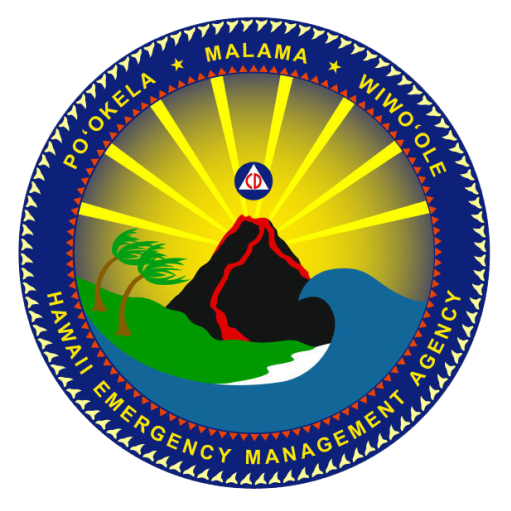NEWS RELEASE: Mauna Loa Focus Shifts to Damage Assessment and Demobilization
DEPARTMENT OF DEFENSE
KA ‘OIHANA PILI KAUA
Hawaiʻi Emergency Management Agency
Mauna Loa Focus Shifts to Damage Assessment and Demobilization
For Immediate Release: Friday, December 16, 2022 Release No. 2022-050
HONOLULU — With the Mauna Loa volcanic eruption paused, the Hawai‘i Emergency Management Agency (HI-EMA) is recalling its teams deployed to Hawai‘i island and shifted its efforts to compiling damage and impact estimates that could be used to support a request for federal disaster assistance.
“Some forms of federal aid are only available if Hawai‘i pursues a major disaster declaration, and that requires proof that the State and Hawai‘i County incurred certain threshold costs for protective measures, damages, and impacts,” said Luke Meyers, HI-EMA administrator. “The damage information we’re collecting from our partners will be used to determine what kinds of federal assistance and reimbursement might be available.”
Since the Mauna Loa eruption began late on Nov. 27, Hawai‘i County and a host of partners began working around the clock to manage and monitor aspects of the incident, including:
- Establishing temporary shelters in the early hours of the eruption;
- Damage and potential damage to roads and infrastructure;
- Air quality monitoring and protective equipment against volcanic emissions;
- Overflights and instrument observation to track the lava, hot spots, and emissions;
- Traffic control measures and security — including deployment of 20 Hawai‘i National Guard personnel — to prevent trespassing and visitor injuries, vehicle collisions, and unauthorized parking along the Daniel K. Inouye Highway.
HI-EMA deployed personnel as part of that cooperative effort to assist Hawai‘i County Civil Defense Agency with its operations, planning, logistics and other duties. HI-EMA team members worked side-by-side with their counterparts in the County Emergency Operations Center, with multiple teams deploying and rotating back to HI-EMA throughout the two-week incident.
With the United States Geological Survey announcement this week that both the Mauna Loa and Kilauea eruptions have paused, those Emergency Management Assistance Teams are demobilizing and returning to the HI-EMA headquarters in Diamond Head crater. The State Emergency Operations Center (SEOC) is scaling back activity and is expected to be deactivated for this incident by Saturday,
“Our role is to support the County in an incident like this, so we are following their lead in reducing our footprint,” said Matthew Wall, Operations Branch chief for HI-EMA and SEOC manager for the Mauna Loa eruption.
The incident next moves into the resilience phase, which involves collecting information, verifying costs and damage assessments, and documenting best practices to mitigate harm. This validated data is essential as the State of Hawai‘i assesses whether to apply to the Federal Emergency Management Agency (FEMA) or other federal programs for assistance and reimbursement.
One possible source of reimbursement would be a federal Major Disaster Declaration, which has minimum cost thresholds to qualify. The current federal thresholds for public assistance to Hawai‘i under a major disaster declaration are about $890,000 for Hawai‘i County and $2.58 million for the State.
Meyers encouraged partner agencies to submit their eligible costs, damages, and impact estimates as soon as possible.
“Fortunately, the Mauna Loa eruption wound up posing no direct lava threat to any of our communities, but it still caused substantial damage and our partners incurred costs to protect the public,” he said. “The federal government may be able to assist with those costs, but we have to do our homework now to determine that.”.
# # #
Contact:
Adam Weintraub
Communication Director
[email protected]
808-620-5417
